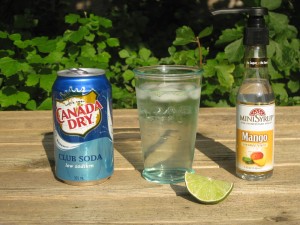Wheat Belly, the book, blog and general term for a distended abdomen caused by wheat consumption coined by Dr William Davis was a thought provoking read and has also been an influence on my lifestyle. I read the book on a sunny pool deck in March. Please see my initial review:
http://trainerspicks.blogspot.ca/2012/04/book-review-wheat-belly.html
The idea of wheat as a food that causes inflammation and other health issues is not a new concept. Many natural health practitioners and nutritionists advocate and prescribe diets that eliminate wheat and dairy to many of their clients. Eliminating wheat has health benefits which Dr Davis makes great claims for in his book. I found his patient examples of the recoveries they experienced from eliminating wheat in the book to be most convincing.
Wheat elimination is great in theory. However, in my observation of the normal population (myself included), it is very difficult to maintain a diet that is completely free of wheat, as it is a food that is everywhere and most of us have foods derived from wheat that we love. For me, the thought of eliminating pizza for life sounds incredibly painful.
The information that Dr Davis provides on the effects of wheat and its modern genetically modified permutation that is consumed excessively is thought provoking. He suggests eliminating wheat entirely and immediately. I did manage to try eliminating wheat for one day after reading the book. I measured my waist the day before and after. Incredibly, I shrank by an inch within that one day and I have never experienced any wheat intolerance symptoms. I have repeated the experiment on quite a few more days and found the same result. To be clear, I simply chose to eat wheat free foods for one single day at a time. Even with this small adaptation, I have noticed that I have diminished sweet tooth inclinations. Having a wheat free day is quite doable, so I’ve been able to incorporate this habit into my lifestyle and so have my clients to positive results.
Changing lifestyle and dietary habits is a challenging task. Therefore, making small highly ‘doable’, almost easy changes is the key to long term success in my opinion. Check out this condensed interview with Dr Davis to get a short, but informative presentation of the book:
If the video or the book piques your interest or healthy eating inclinations, try having a wheat free day first and perhaps more wheat free days will follow from the positive effects you may feel. I suggest choosing foods such as brown rice, potatoes, quinoa, buckwheat, sweet potato, brown rice pasta, millet, barley, polenta, and oats to replace the carbohydrate that you are accustomed to eating in your diet when eliminating wheat for a day. Changing the variety of foods you eat is always a good idea, as it increases the range of nutrients you ingest and it is simply more fun.


Working for a Meal?
This week, I came across two articles on a food trend of people working for their lunch or dinner. Working in the sense of volunteering their time to help in the labour intensive process of bringing harvest from the farm to the table.
http://www.theglobeandmail.com/life/food-and-wine/food-trends/free-labour-diners-line-up-to-volunteer-at-restaurants/article4566712/
Having volunteers help a restaurant produce food product is quite the clever ‘win-win’ situation-helping educate the consumer in the farm to table process while the restaurant receives some extra labour they could use at a time of abundance. Creating good, high quality food does require work!
I particularly like the community spirit behind working for your dinner at the Irish Heather in Vancouver:
http://ltsmenu.blogspot.ca/
I truly believe that the more we can be involved in the process of bringing food from harvest to table, the more we can understand and become aware of best practices for environmentally and economically sustainable food production.
Perhaps this could be inspiration to go apple picking at this time of year. Great outdoor activity and opportunity to work for your Canadian Thanksgiving dinner…
Leave a comment
Posted in commentary, local food
Tagged Food trend